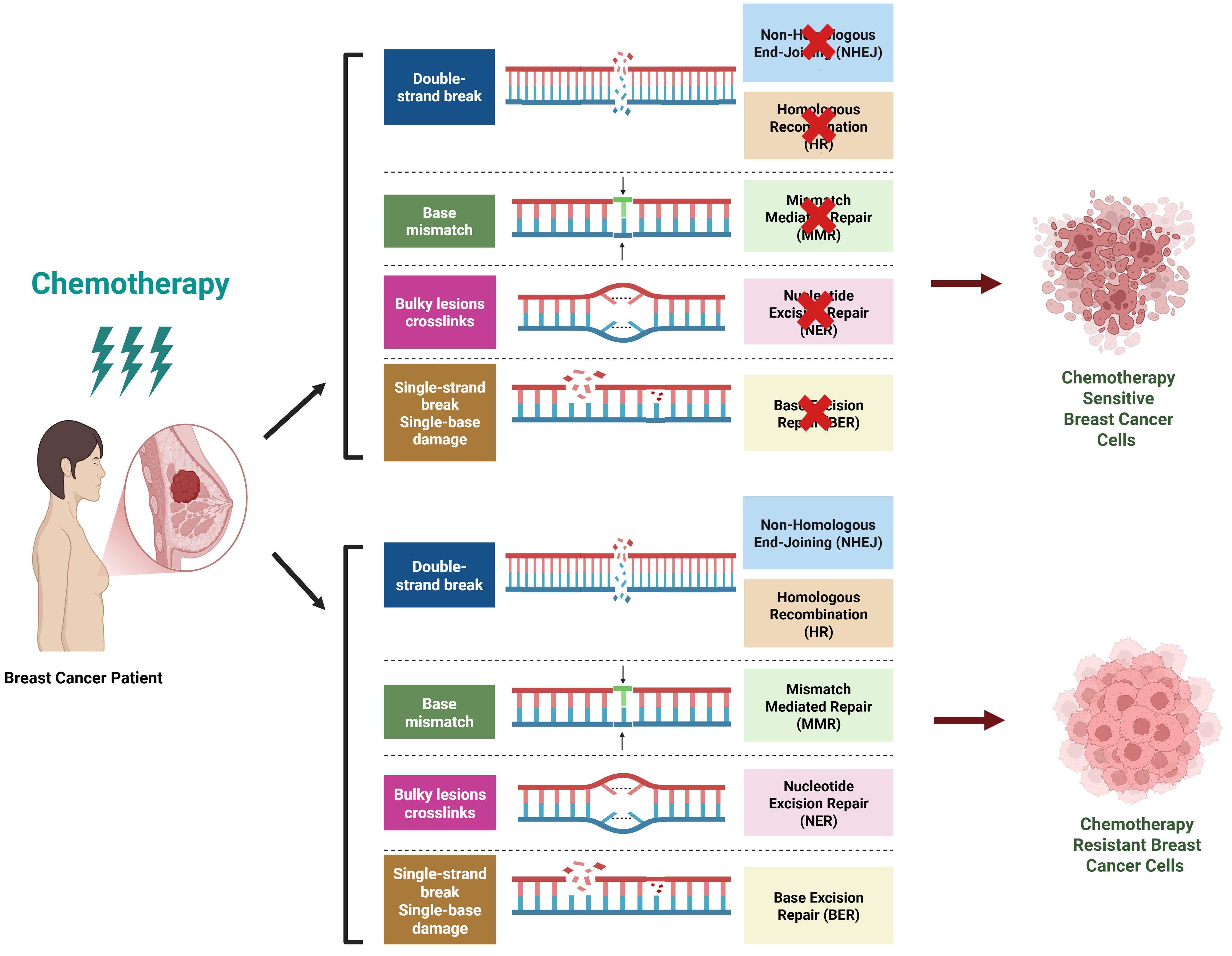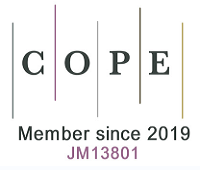fig3
Figure 3. Chemotherapy-induced DNA damage repair in breast cancer, highlighting sensitivity and resistance mechanisms. In chemotherapy-sensitive cells, treatment induces DNA damage mechanisms such as DNA crosslinking, DSBs, and base modifications, leading to impaired DNA repair and subsequent cell death. In contrast, chemotherapy-resistant cells activate robust DNA repair mechanisms, including NHEJ, BER, NER, MMR, and HR, enabling them to effectively repair DNA damage and thereby promote survival. Created in BioRender. Malhotra, D. (2025) m6nst1k. DSBs: Double-strand breaks; NHEJ: non-homologous end joining; BER: base excision repair; NER: nucleotide excision repair; MMR: mismatch repair; HR: homologous recombination.












